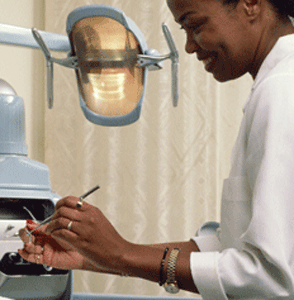Oral diseases affect almost half the global population, and recent research indicates they persist because oral health has not been prioritized as much as traditional healthcare.
One factor, cited in research published in the Lancet Series on Oral Health led by University College London: Dentistry focuses more on technology and treatment than on prevention.
One avenue of prevention is early orthodontic evaluation, not necessarily to start orthodontic treatment, such as the application of braces, but to uncover any lurking bite problems and determine appropriate solutions. The American Association of Orthodontists recommends that every child have their first orthodontic visit and evaluation by the age of seven.
“As dental professionals, we need to do a better job of educating the parents of young children— specifically as to why it’s important to monitor the development of their bite,” says Dr. Ana Cas- tilla, an orthodontist and the author of the book Smile of Your Life: Everything You Need to Know for Your Orthodontic Journey (dranacastilla.com). “Most children do not need early orthodontic treatment, but by the age of seven there has been sufficient jaw development and enough permanent (adult) teeth have erupted for an orthodontist to be able to identify if there are any problems developing. When these problems are caught early, it helps to avoid more aggressive and more costly treatment later on.”
Castilla lists three ways in which early diagnosis and interceptive orthodontic can be effective:
•Identifies specific oral problems early— By age seven, most children have a mix of primary (baby) and permanent (adult) teeth. Early tooth issues may include crowding or too much space between teeth, underbite, overbite, jaw abnormalities, missing teeth and protruding teeth. “Genetics, poor nutrition, poor oral hygiene and thumb- or finger-sucking can bring early onset of orthodontic problems,” Dr. Castilla says. “And while your child’s teeth may appear aligned and straight to you, there could be a problem that only an orthodontist can detect. They’re trained to identify subtle problems with jaw growth and emerging teeth while some baby teeth are still present.”
•Utilizes different types of preventive measures— These vary depending on the situation. “If a child is a thumb-sucker or finger-sucker, an appliance can be inserted in their mouth that makes it difficult for them to continue a habit that can lead to a serious overbite problem,” Dr. Castilla says. “Appliances such as palatal expanders can widen the upper jaw to help resolve dental crowding, while night-time headgear may be advised to correct discrepancies between the sizes or position of the jaw.”
•Provides long-term health benefits— Early intervention and treatment may prevent the development of more serious health conditions. “Additionally,” Dr. Castilla says, “it improves oral hygiene, helps the child avoid self-esteem issues and mocking by peers associated with neglected or misaligned teeth, guides permanent teeth into proper position, and directs jaw growth and development.”
“You can be completely unaware that a problem exists with your child’s teeth— simply because you can’t see it or don’t know what to look for,” Dr. Castilla says. “Early detection and treatment can resolve issues early before they become complicated and difficult to correct.”
Dr. Ana Castilla is an orthodontist and the author of the book Smile of Your Life: Everything You Need to Know for Your Orthodontic Journey. Dr. Castilla is a Diplomate of the American Board of Orthodontics and is dedicated to both education and research in the field of orthodontics. For more information, visit: www.castillaortho.com.
